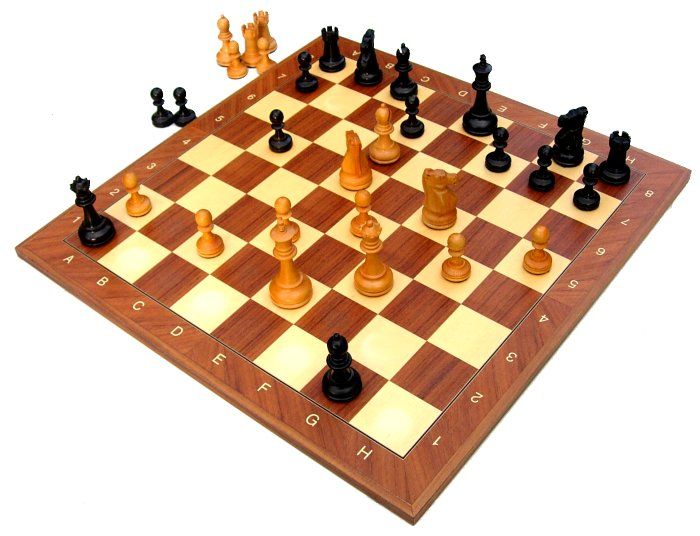How To Play: Chess
Chess Quick Summary
Chess is a classic game where two players try to checkmate each other's king. Learn How To Play chess by mastering openings, controlling the center, and planning endgame tactics. Remember the basic rules, set up the board right, and don't let Dave trick you with his weird opening moves.

Overview
If you’ve ever lost a game of chess to your little cousin and cried into your snack bowl, this guide is for you. I’ve played enough games to know what works (and what gets me checkmated fast). Here, I’ll walk you through the basic rules, plus my favorite tricks and strategies. If you want to learn How To Play chess—and actually win—grab your pieces and follow along!
What’s in the box
- 1 Chessboard
- 16 White Chess Pieces
- 16 Black Chess Pieces
- 1 Rulebook
How To Play Chess: Rules Summary
Setup
- Place the board so each player has a white square on their right corner.
- Line up your rooks in each corner, then knights next to them, followed by bishops.
- Put the queen on her matching color (white queen on white, black on black).
- Set the king beside the queen. Fill the front row with pawns.
Gameplay
- White moves first. Players take turns moving one piece at a time.
- Each type of piece moves in its own way. (Pawns forward, bishops diagonal, knights in an ‘L’ shape, etc.)
- You capture an opponent’s piece by moving your piece to its square.
- You cannot move through your own pieces. Knights are the only piece that can jump over others.
Winning
- The main goal is to checkmate your opponent’s king. This means the king is under attack and cannot escape.
- If you put the king in check, your opponent must move out of check on their next turn.
- If checkmate is not possible and no legal moves remain, you have a stalemate and the game ends in a draw.
Special Rules & Conditions
- Castling: Once per game, you can move your king two squares to the side and move the rook in the corner next to it. This only works if neither piece has moved and the squares between them are empty.
- En passant: If a pawn moves two spaces forward from its starting spot and lands beside an opponent’s pawn, that pawn can capture it as if it just moved one square.
- Pawn promotion: If a pawn reaches the other side, you must swap it for a queen, rook, bishop, or knight.
Now you know how to set up the board, keep the game moving, aim for a win, and remember those sneaky special rules. Next time someone asks, you’ll know exactly how to play chess. And if you forget, just remember—rook goes in the corner, and the queen loves her matching color!
Best Chess Strategies
How To Play Chess: Mastering Your Opening Moves
Choose a Strong Opening
To win in chess, your first moves matter. While my friend Dave once tried opening with a horse leap that made us all laugh, real experts know better. Here are top strategies:
- Control the center squares with pawns (e4, d4, e5, d5)
- Develop your knights and bishops quickly
- Avoid moving the same piece twice early on
Protect Your King
Nothing ruins a game faster than forgetting your king. Dave learned this when I checkmated him in six moves. Follow these steps:
- Castle early for safety
- Clear the back row for your king’s escape route
Plan Your Setup
Every piece plays a role, so set them up well and you’ll look like a genius. Trust me, it works (sometimes).
- Get your rooks ready for open files
- Coordinate your minor pieces for better attacks
Take Charge: How To Play Chess by Controlling the Center
Controlling the center is the secret sauce to winning chess. First, it gives your pieces more space to move. Next, it limits your opponent’s options. After several games with friends, I realized the middle squares are king! Here’s how I do it every time:
Open With Central Pawns
- Push pawns to e4 or d4 as your opening move.
- Support these pawns with your knights and bishops right away.
Place Pieces Aggressively
- Get your knights to f3 and c3 (or f6 and c6 for black).
- Bishops go to c4 or f4 early, aiming at the center squares.
Maintain Pressure
- Trade off pieces only if you keep control of the center.
- Keep an eye out for any sneaky pawn advances from your opponent.
Trust me, following these steps will make your chess game much stronger. Soon, you’ll be the boss of the board!
Checkmate Like a Pro: Endgame Tactics That Really Work
Push Your Pawns
- Advance your passed pawns when possible. They are your secret weapon.
- Protect them with your king or other pawns as you move forward.
Use Your King
- Bring your king to the center when it’s safe.
- Help your pawns with your king for extra muscle.
Cut Off the Enemy King
- Block their king so it can’t reach your passed pawns.
- Use your rook or queen to stop enemy king movement.
When you remember these endgame tactics, you have a real shot at winning. And if you ever need a refresher on the basics, just search “How To Play chess” and you’ll be right back on track. I once forgot to use my king, and lost a game to my aunt. Never again!
Ready to Rule the Board?
Look, I won’t say you’ll be Magnus Carlsen overnight (my mate Dave still crushes me in three moves), but with these tips you’re miles ahead of where you started. Keep practicing your opening moves, control that center, and don’t panic in the endgame. Remember, the secret to How To Play chess is to keep playing. And maybe don’t trust Dave. Happy checkmating!
Want to know what we think of Chess? Read our detailed review of Chess here

